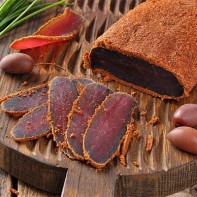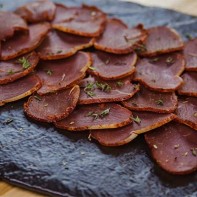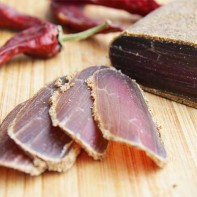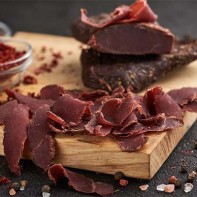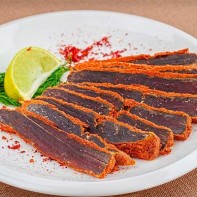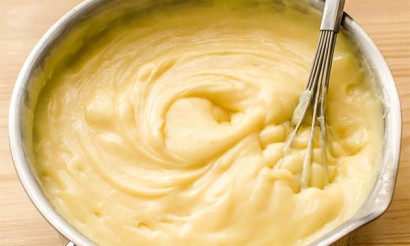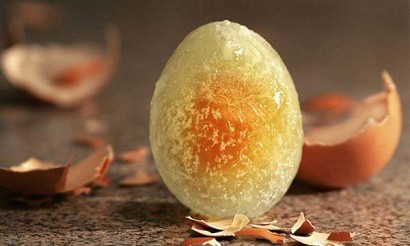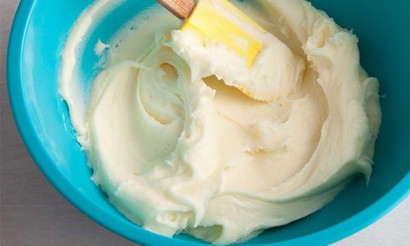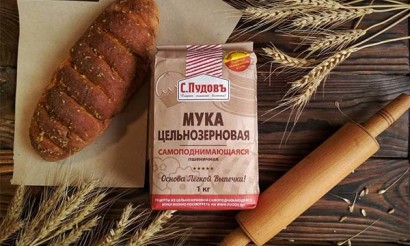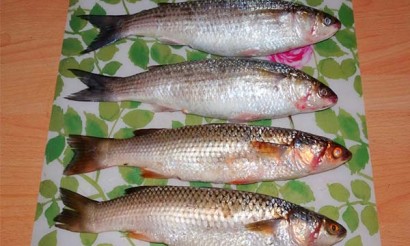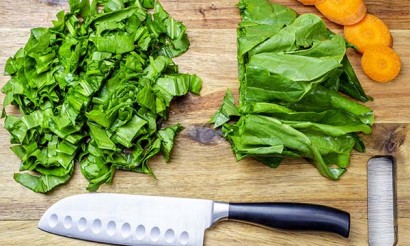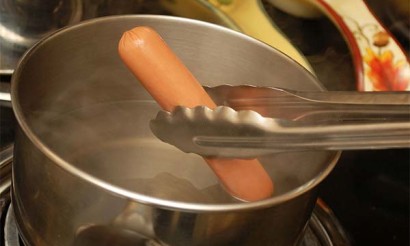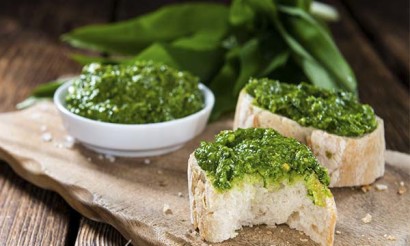What is basturma and what is it made of? Recipes for cooking
Cured meat basturma is a protein product that preserves valuable amino acids, a rich vitamin and mineral complex. The delicacy is not difficult to make at home yourself, if you study the technology of preparation.
What is basturma
Basturma is a salted and dried fillet of beef, horsemeat, pork and other meats, cooked without heat treatment. In some countries, this name refers to a different dish. For example, in Georgia and Azerbaijan basturma calls pickled pieces of meat for shashlik.
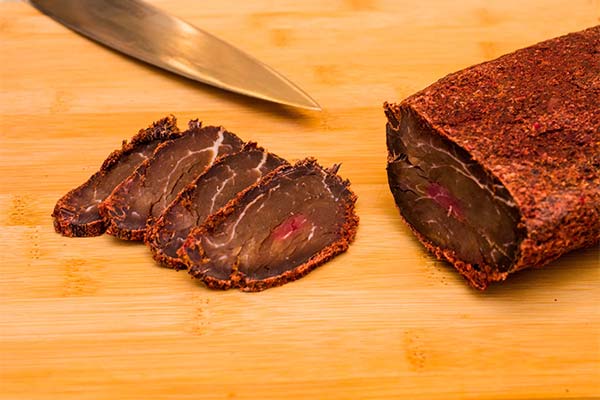
Europeans know basturma as a dried product, combined with greens, fruits, vegetables, bread, pita bread, beer and dry wine. It is often confused with other types of dried meat - pastrami, sujduk, jamon.
How it appeared
Previously referred to as borscht basturma appeared by accident. Turkic nomads on long journeys took with them a stock of horsemeat, which was stored under the saddle on the back of the horse. Under the weight of the rider, the meat, soaked in horse sweat, was pressed, lost its moisture and turned into a tasty meat snack.
Armenians improved the technology of Turkic cuisine and adapted it to the settled way of life. They added spices to the recipe that are inaccessible to nomads, and developed a recipe that survives to this day.
What to make it from
Traditionally, basturma is made of beef, pork, lamb, and chicken breasts. But there are also exotic types of delicacy prepared from elk, goose, kangaroo, turkey and ostrich meat.
The most delicious uncooked product comes from fresh beef - the loin of the back or back of the thigh.
What it tastes like
Jerky is considered a delicacy because of the savory original taste, the aroma of spices, which is soaked for at least a week.
What it tastes like
The history of the appearance of basturma, pastrami, corned beef, and jamon is associated with the need for long-term preservation of meat in the absence of a refrigerator. What these types of delicacies have in common is that they are made from meat.
Pastrami is especially similar to basturma. Both delicacies are pressed briquettes of elastic whole-muscle pieces of dark red meat flavored with spices.
How does basturma differ from...
Basturma differs from other types of meat products by the place of origin, the nuances of cooking, the type of raw materials, the set of spices.
From carpaccio.

The history of Italian carpaccio is no more than 70 years old. The dish is thin slices of frozen meat, under the original sauce of mayonnaise with lemon juice, milk, pepper and Worcester sauce.
Carpaccio, whose creator is thought to be the Venetian owner of Harry's Bar Café and part-time chef, is now served with first cold-pressed olive oil, arugula, and Parmesan. The difference from salted and spice-dried meat briquettes is obvious.
From sujuk.
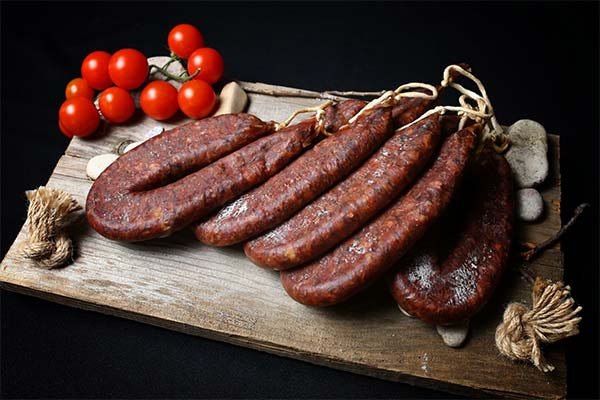
Basturma and sujuk are Turkic dishes made from dried meat. The two types of delicatessen products differ in cooking technology. Basturma is pieces of meat that are salted, pressed and dried, previously coated with a mixture of aromatic spices.
Sudjuk is made of beef, pork, lamb or mixed meat. The fillet is cut in pieces and salted, combined with fat and stuffed with natural casings that are punctured in several places to let the moisture and air out.
The sausage is then hung to dry in a cool, ventilated room, rolling with a rolling pin daily. The finished suzhuk acquires a dense, firm consistency, flattened shape.
From Pastrami
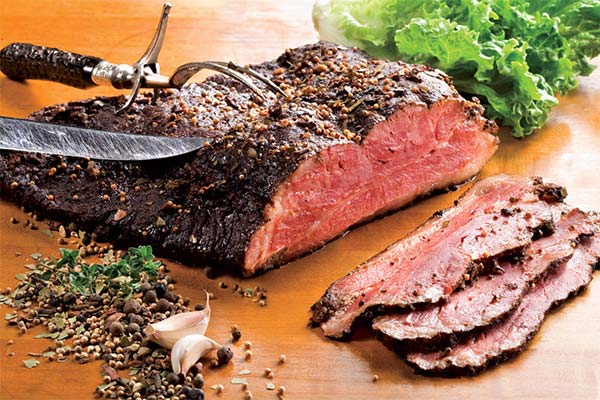
Pastrami, originally from Romania, Moldova is made in a different way. The sirloin of beef, pork, or chicken breasts is marinated in a sour-salt solution with spices, then baked or smoked.
Unlike basturma, pastrami is heat-treated. The meat delicacy was introduced to the United States in the 19th century from Bessarabia, where it was renamed pastrami. At first, the kosher product was popular exclusively within the Jewish community. Today, pastrami sandwiches are an integral part of American cuisine. Numerous cafes in New York offer pastrami sandwiches with delicious meat.
From Jamon.
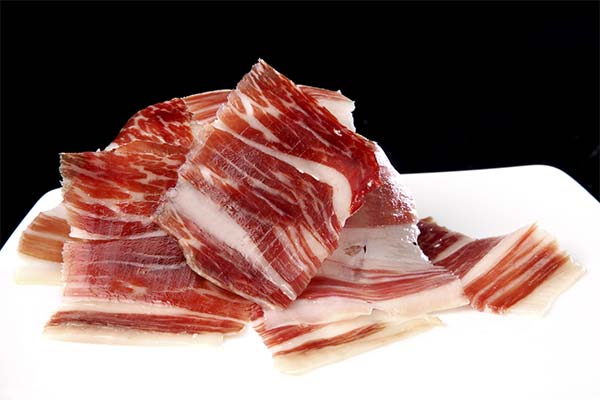
Jamon is a Spanish delicacy with a rich history, made from the hind legs of a pig. The meat is salted for seven days and cured for six to three years. From early spring to late summer, the pork is dried outdoors with gradually rising temperatures. The next six months the meat is dried in the cellar, where it acquires its original flavor and aroma.
For the festive table the Spaniards serve jamon from Iberian black pigs bred on acorns. Jamon serrano, cooked from the meat of white pigs, more affordable, is included in the daily ration.
How to cook basturma at home
If originally basturma was made from horse and lamb, nowadays beef, pork and poultry are used as raw materials. Different nations have their own recipes that they carefully preserve and pass on as an inheritance. For example, in Armenia, where they first made a delicacy in the conditions of settled life, they serve basturma soaked in wine for the holidays.
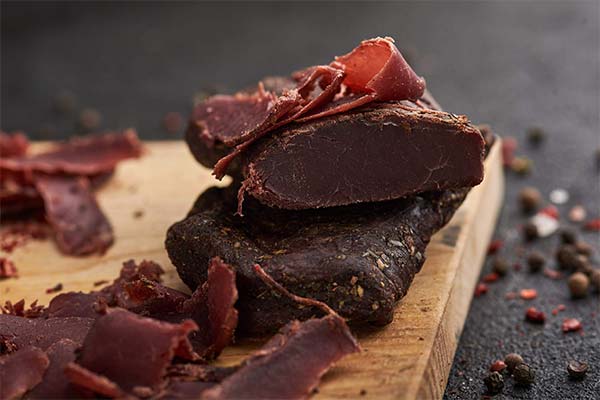
From beef
For making this delicacy veal is not good, take beef with a brighter flavor. Cut 2 kg of fillet without veins, films and fat into 4 equal even pieces. Use a tray with high sides to keep the meat from deforming during stacking and salting. Sprinkle half a packet of coarse salt on the bottom, lay the beef on it, and distribute the remaining seasoning on top.
After 12 hours of salting in the fridge repeat the procedure. Wash the meat from the salt, wash and dry the tray, salt it again, just like you did the first time. During three days, 1-2 times a day take the beef out of the refrigerator, drain the meat juice.
Make a coating by combining 2 tsp. paprika, dried garlic and honeysuckle, 1 tsp. each of red pepper, black pepper and mixed pepper, 100 grams of chaman (fenugreek) in half a cup of water. Mix and knead the spices thoroughly to obtain a homogeneous mass.
Wash and dry beef, tie with twine, leave free end for hanging. Generously spread the seasoning mixture on the surface of the fillets, send the briquettes to cure on the balcony. When the coating dries, wrap each piece with gauze, continue drying for another month.
From pork
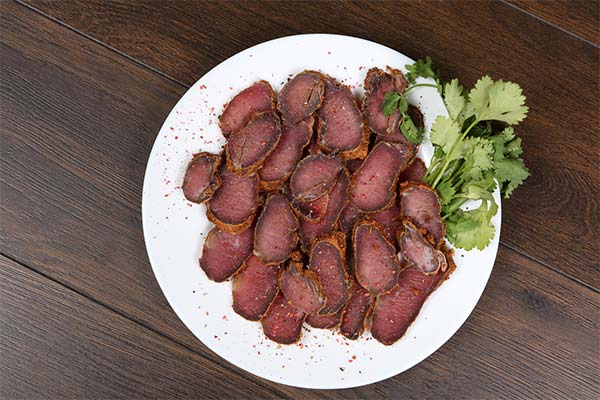
To prepare a jerky product from 2 kg of pork loin you will need:
- 2 tbsp each of sugar, fenugreek, ground coriander;
- 2 tsp. dried garlic, ajika, ground cumin;
- 1 tsp. hot pepper;
- packet of salt.
Method of cooking:
- Rinse tenderloin, cut into four pieces equal in weight.
- Combine sugar and salt. Roll pork in half of the mixture, put it in a glass or ceramic container of rectangular shape, fill it with the rest of the salt and sugar, put it in the cold place.
- During three days periodically turn meat, pour out the liquid accumulated on the bottom.
- Rinse the pieces, and leave to soak in water for at least 3 hours. Change the water every 30 minutes.
- Dry the fillets, put them in a bowl, cover with a plate, put a crust on top for pressing.
- After 24 hours, make holes in the flat pieces of gray pork, put in a thin cord or strong thread, hang to dry for three days in a ventilated room.
- Mix all the spices in a bowl, pour 100 ml of water at room temperature, stir, leave to infuse for a few hours.
- When the spicy-spicy mixture is ready, coat pieces of pork tenderloin with it, dry for another week.
Ready basturma of pork acquires the consistency of uncooked sausage.
From chicken breasts
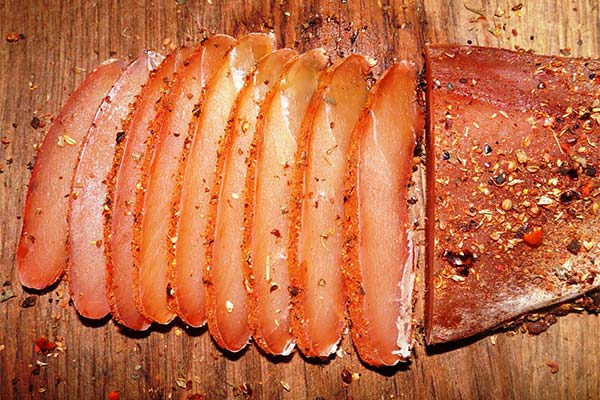
To make basturma from poultry meat, you will need:
- 1 kg of chicken breasts;
- 2 tbsp. vegetable oil, honey;
- 2 tablespoons each of salt and sugar;
- A big spoonful of paprika and soy sauce;
- 4 cloves garlic;
- 2 bay leaf;
- 1 tsp. black pepper, 0.5 tsp. ground.
Cooking Algorithm:
- Cut each breast lengthwise into 2 halves.
- Make the marinade. In a pot or bowl pour 3 cups of water, add seasonings (salt, sugar, pepper, bayroot). Close the container, send to the cold for 24 hours.
- After 24 hours, remove the chicken fillets from the marinade, rinse under running cold water. Dry the breasts to keep the glaze on.
- The next step in cooking is to make the glaze. Combine and mix together oil, honey, soy sauce, ground pepper, and paprika. Spread the mixture evenly over the surface of the meat.
- After two hours at room temperature, roll up tightly, tie with a thick thread, and place in the refrigerator for 8-12 hours.
- Set the thermostat of the oven to 160°C. Place the meat pieces on a baking tray lined with foil on the bottom.
- Bake the breasts for 40 minutes, sprinkling occasionally with the meat juices. Increase the temperature in the oven by 20 degrees and cook for another 20 minutes.
Before serving, cool the chicken basturma, cut into thin slices.
From elk
The meat halves in size while cooking, so take pieces no smaller than 6-7 cm in diameter. Sprinkle moose generously with coarse salt, put it in a deep pan, put a plate on top, put a weight on it. Leave the meat to salt until the morning.
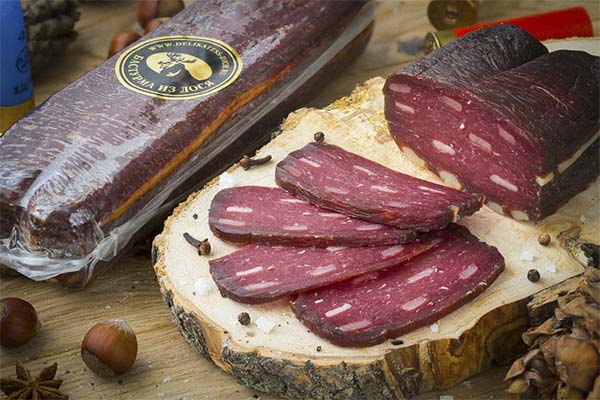
Overnight, the seasoning will draw out the juice, and the fillets will be completely submerged in the brine. Drain it. On the fifth day, rinse the contents of the pan, pour cold water, change it every 6 hours during the day.
With cloth napkins, paper towels, dry the meat, each piece rolled in spices (black and red pepper in a ratio of 1:3, baking powder, thyme and a set of spices for beef, dried garlic). Return the seasoned moose to the pot, press down with a crutch, and leave at room temperature for a week.
Take thick synthetic twine, cut it into one-meter lengths, tie each piece. Make a loop at the end for hanging.
Let the meat to dry for a week by attaching the unbent staples to the caprone string stretched in the kitchen and to the loop of twine with which the elk is tied.
Homemade basturma retains its consumer properties for up to six months in the refrigerator if the product, wrapped in parchment or placed in a canvas bag. A ventilated cellar can replace a kitchen appliance to keep the temperature low. In it the delicacy is stored in a suspended state.
«Important: All information on this site is provided for informational purposes only. for informational purposes only. Before using any recommendations, consult with a health care professional. specialist before using any of the recommendations. Neither the editors nor the authors shall be liable for any possible harm caused by materials."

